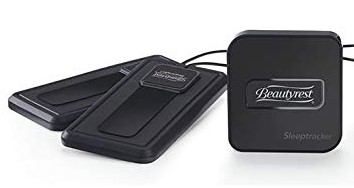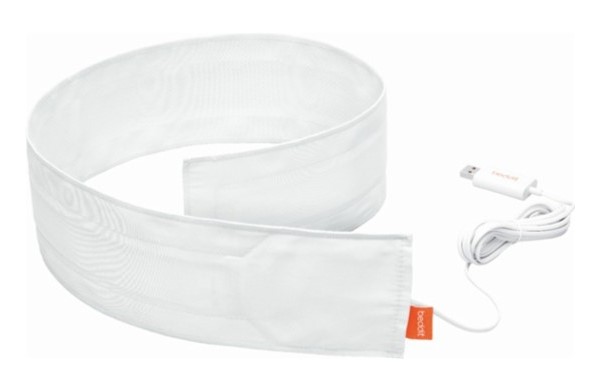

One of the criticisms of the Apple Watch is that there is no native sleep monitoring, but that’s not keeping Apple from wanting to measure your sleep. Instead, the consumer electronics giant last year acquired Beddit, a sleep detection device that’s composed of a plastic strip that you put under your bottom sheet, to measure how you sleep. Apple just released the newest version of Beddit (3.5) with an accompanying iPhone app.
As is often the case with new Apple product categories, Apple is not the first to market a sleep detection device that connects to the bed. And, as is sometimes the case, the Apple product isn’t best of breed. I installed the new Beddit device to compare with the Sleeptracker by Beautyrest monitor that I’ve been using for about a year and prefer the Sleeptracker.
Beddit is available at Apple stores or at Apple.com for $149.95. Beautyrest Sleeptracker lists for $199, but Amazon is currently selling it for $116.14 while Sears.com now has it for only $69.99.
Listen to Larry’s CBS News Radio 45-second Eye on Tech about these products
The Apple and Beautyrest devices have a few things in common, but they differ in important ways. First, the Sleeptracker works with both Android and iPhone while Beddit only works with iPhone. Second, a single Sleeptracker product works with two sleepers so, if you share your bed, you and your partner can both get sleep data. You would have to buy and install two Beddit products to measure two sleepers. With Beddit, you need to have the phone in the room, while Sleeptracker connects to your home Wi-Fi network and can work independently of the phone, once it’s set up. During setup, the Sleeptracker app asks if a pet sleeps on your bed to make sure the pet doesn’t affect your readings.
Also, Sleeptracker uploads your data to powerful cloud-based servers, according Philippe Kahn, CEO of Fullpower, the Santa Cruz company that developed the product for Beautyrest. Kahn said that the data is anonymously compared with data from thousands of other users to give people a basis of comparison. He said that the company adheres to strict European privacy guidelines in all markets, including the U.S.
Another big difference is that the Sleeptracker sensors go under the mattress instead of on top of it. I could actually feel the Beddit strip as I was lying in bed. The Sleeptracker sensors are undetectable, except maybe to the protagonist of Hans Christian Anderson’s “The Princess and the Pea.”
Sleeptracker sensors have a cord that connects to a processor that you pair with your home Wi-Fi network and configure from your phone. Once installed, the processor can be tucked under the bed. The Beddit strip has a cord with a USB plug that connects to a power outlet. Beddit doesn’t use Wi-Fi. It connects to the iPhone via Bluetooth.
I prefer the Wi-Fi system because it works independently from the phone. Some sleep experts recommend you not even have your smartphone in the room while sleeping. Plus Sleeptracker could be used by someone without a smartphone, perhaps an elderly person so relatives could monitor their sleep. In an interview, Kahn pointed out that even though Sleeptracker is not a medical device, changes in sleep patterns and other reported data such as pulse and breathing rate, could be signs of a health issue.
Both the Beddit and the Sleeptracker monitor pulse and breath rate as well as how much time you spent actually sleeping. They also both report “efficiency,” the percentage of time asleep vs. the time in bed. Beddit tells you how long it took you to fall asleep while Sleeptracker has a graphic that shows you your sleeping, breathing at heart rate patterns in a timeline that starts when you go to bed and ends when you get up.

Sleeptracker also tells you how many times you got up during the night, perhaps to go to the bathroom. Sleeptracker also displays your number of hours and minutes of total sleep, deep sleep, light sleep and REM sleep as well as the time you feel asleep and how much time you were awake during the night. In addition to seeing it on the app, you get an optional daily email report with the data and a private webpage that you can share, perhaps with your doctor. Sleeptracker also gives you a sleep score based on several factors, which is a quick way to know whether you got a good night’s sleep. Both devices track your sleep over time to let you see trend lines.
Beddit can monitor your snoring but only through your iPhone’s microphone, so you need to have the phone nearby. Kahn said that he decided not to offer that feature because of concerns about having an open microphone in the bedroom.
Because Sleeptracker comes with two sensors, my wife and I both have the apps on our phones and can compare our data. You have to buy two Beddits to support two sleepers.
Although I think you can be overly obsessive in monitoring any aspect of your health and fitness, I do think that having sleep data, over time, can be helpful and can encourage good habits, such as going to bed at a consistent time and spending enough time in bed. I also prefer the idea of a bed-based solution to a fitness band or smartwatch. A lot of people don’t like wearing a watch when they sleep, some watches need to be charged every night and, based on conversations I’ve had with experts, watches won’t give you as much accurate data as a device on or under your mattress.
In general, having more information about your health — including sleep data — is a good thing. As long as you aren’t so obsessed with the data that you wind up losing sleep over it